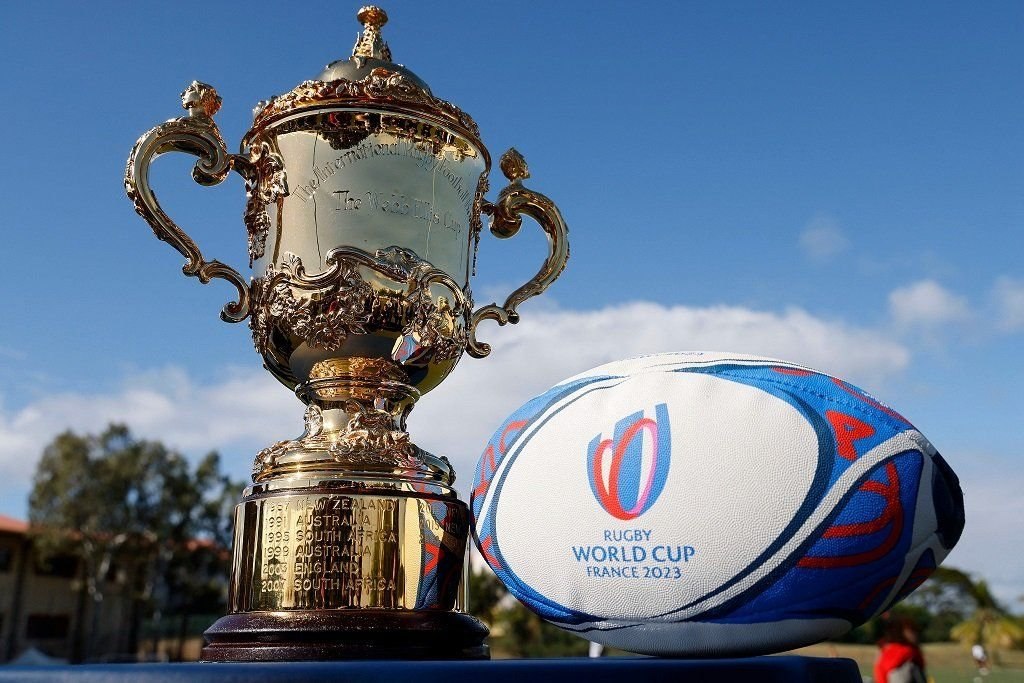
Rugby World Cup 2023 – Tracking buzz and public sentiment across key markets
The Rugby World Cup 2023 has generated significant buzz globally. An examination of YouGov SportsIndex metrics offers insight into shifts in public sentiment across key markets. Buzz scores capture net public sentiment, gauging the balance between positive and negative perception of the conversations around the RWC in recent times.
In the lead-up to the tournament's start on September 8, its Buzz scores varied considerably among countries. England and Wales, for instance, displayed initial dips just before the tournament perhaps reflecting respective optimism for their team’s prospects, only to see remarkable recoveries following crucial early victories on the field. The tournament’s score in England rose from 3.6 on August 31 to 16.3 by September 28 — an increase of 12.7 points. In a similar vein, its score in Wales climbed from a 0.5 on September 8 to 26.7 by September 22, a significant 26.2-point jump.
When it comes to Scotland, Buzz scores rose by almost 10 points, from 7.7 on August 27 to 17.6 on September 28.
As the host nation, in France the tournament has consistently attracted positive attention. Its score charted an upward trend, moving from 23.9 on August 27 to an impressive 43.6 by September 28 — an almost 20-point improvement.
Buzz scores for the Rugby World Cup in Japan sharply ascended by 10.8 points, from 6.5 on August 27 to 17.3 by the end of September, as the country edged towards the next round of the competition.
Conversely, Argentina and Australia displayed declining trajectories. In Argentina the tournament started at 9.9 on August 27 and fell to 4.7 by September 28 — a 5.2-point decrease. In Australia, the World Cup peaked modestly at 8.9 on September 23, only to fall to 6.7 five days later.
Shifting to Word-of-Mouth (WOM) Exposure scores, which measure the shares of people discussing the Rugby World Cup, Japan is a particularly notable market, with scores starting at 7% at August's end and surging to 18.8% by September 28.
Italy saw its score rise from 1.3% on August 27 to 4.6% on September 24. As for Australia, scores peaked at 11.7% on September 23, marking a 6.4-point increase from 5.3% on August 27. The day after, the country’s team was trounced by Wales. Word of Mouth scores in France began at 19.4% on August 27 and by September 28, achieved a remarkable 43% — a testament to the World Cup's conversational significance in the host nation.
The WOM Exposure score in England increased by 12.6 points, moving from 8.5% on August 27 to 21.1% on September 24. Wales' WOM scores, akin to its Buzz scores, witnessed fluctuations. Starting at 19.8% at August's end, it dropped to 12.2% by September 7. However, with Wales being the first team to qualify for the quarter finals, scores peaked at 36.8% on September 25.
The Rugby World Cup 2023 has not only captured the attention of sports enthusiasts but has also dominated daily conversations across various countries, as evident from the Buzz and WOM Exposure scores. These metrics offer a unique lens into global engagement, with varying degrees of enthusiasm and sentiment across different regions.
Explore our living data – for free
Discover more sports content here
Want to run your own research? Run a survey now
Make smarter business decisions with better intelligence. Understand exactly what your audience is thinking by leveraging our panel of 20 million+ members. Speak with us today.
Methodology: YouGov SportsIndex measures the public's perception of sports brands on a daily basis across 16 metrics. Buzz scores are based on question: Over the past two weeks, which of the following sporting events/leagues have you heard something positive/ negative about (whether in the news, through advertising, or talking to friends and family)? (difference between positive and negative gives us our net score). WOM Exposure scores are based on the question: Which of the following sporting events/leagues have you talked about with friends and family in the past two weeks (whether in-person, online, or through social media)? Scores are based on the average sampling size of a minimum of 100 adults in each market. Figures are based on two-week moving averages. Learn more about YouGov SportsIndex.
Cover photo credit – BBC UK